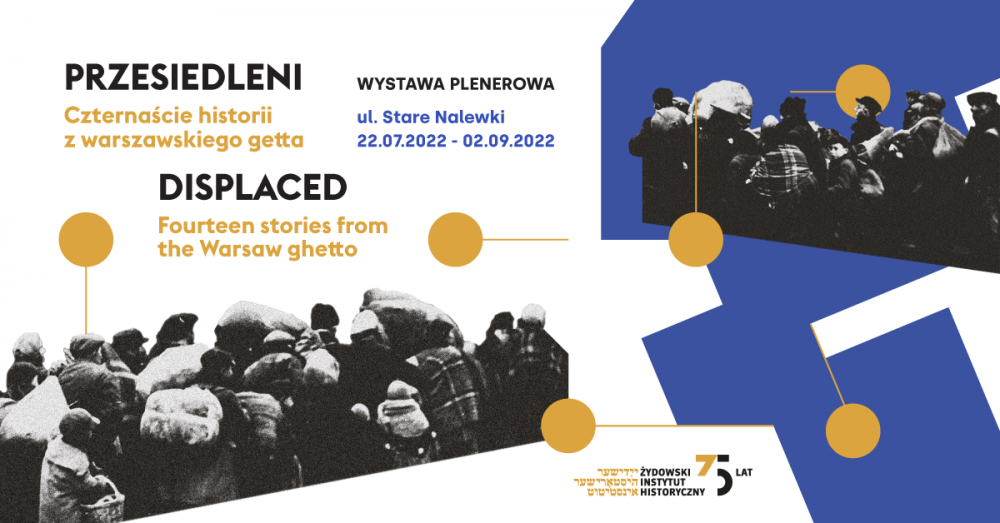- News
- Events
- Oneg Shabbat
- Collections
- Research
- Exhibitions
- Education
- Publishing Department
- Genealogy
- About the Institute
- Bookstore


The art installation, prepared for the March of Remembrance, 22 July 1942, consists of high concrete modules. They form fragments of the wall on which we present cards with the life stories of people displaced to the Warsaw ghetto.
The installation stands on the pavement of Stare Nalewki [Old Nalewki] Street, almost exactly where the border between the ghetto and the so-called the “Aryan” side was once located.
The wall of the Warsaw ghetto, which divided two worlds – Jewish and Polish – under the German Nazi order, condemned Jews to isolation. The world outside the ghetto was hostile, and living within the walls condemned them to hunger, poverty and disease. Refugees and displaced persons were in a particularly difficult situation – uprooted and deprived of the support offered by familiar environment.
Fourteen selected stories illustrate how much courage and determination required both living in the ghetto and seeking help on the other side of the wall.
After the exhibition is over, individual panels – cards with the stories of the displaced persons’ lives – will be sent to their hometowns. In this symbolic way, we will recall their stories in the towns they came from.
___
Curators: Marta Janczewska, Franciszek Bojańczyk
Organizer: the Emanuel Ringelblum Jewish Historical Institute
Design project: Jan Strumiłło, współpraca Helena Wierzbowska
Production: IKG Aleksander Siedlicki
Text design: bisoñ studio
Editing: Marta Wojas
Translation: Zofia Sochańska
__
Supported by the Norway and EEA Grants from Iceland, Liechtenstein and Norway and the national budget
![norweskie_belka_EN_od_11.2021.jpg [347.29 KB]](https://www.jhi.pl/storage/image/core_files/2022/5/26/728739c11fac2ac0888ece903ada7662/jpg/jhi/preview/norweskie_belka_EN_od_11.2021.jpg)